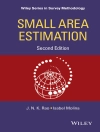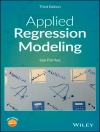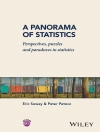This newly updated edition of the benchmark guide to
computer-assisted clinical trials provides a comprehensive primer
for prospective managers. It covers every critical issue of the
design and conduct of clinical trials, including study design,
organization, regulatory agency liaison, data collection and
analysis, as well as recruitment, software, monitoring, and
reporting.
Keeping the same user-friendly format as the original, this Second
Edition features new examples and the latest developments in
regulatory guidelines, such as e-submission procedures and
computerized direct data acquisition. The new edition also reflects
the increasing globalization of clinical trial activities, and
includes new information about international standards and
procedures, including the Common Technical Document and CDISC
standards.
This step-by-step guide is supported by handy checklists and
extracts from submitted protocols. Experienced author and
consultant Phillip Good incorporateshumorous yet instructive
anecdotes to illustrate common pitfalls. Based on the proven
industrial formula of planning, implementing, and finally
performing essential checks, the book’s three sections-‘Plan, ‘
‘Do, ‘ and ‘Check’-includethe following material:
* Should the trials be conducted?
* Put it in the computer and keep it there
* Staffing for success
* Designing trials and determining sample size
* Budgeting
* Recruiting and retaining patients and physicians
* Data management
* Monitoring the trials
* Data analysis
* After action review
* Exception handling
Executive and managerial professionals involved in the design and
analysis of clinical experiments, along with clinical research
associates, biostatisticians, and students in public health will
find A Manager’s Guide an indispensable resource.
Praise for the First Edition:
‘. . . readable, informative and at times witty . . . never stops
being concise and well written . . . a book worth a read . .
.’
-Statistics in Medicine
‘The book is very prescriptive and full of lists and tables with
which to guide managers in making effective decisions in using
computer-assisted clinical trials in pharmaceutical studies.’
-Technometrics
‘This book is must-have reading for anyone in the business . .
.’
-Clinical Chemistry
Tentang Penulis
Phillip Good, Ph.D., a graduate of UC Berkeley’s statistics program, is the author of sixteen published books. He has 23 years of experience in the pharmaceutical and medical device industries, first with Upjohn, and then as an independent consultant. He has taught anatomy and biology, and has also served as Calloway Professor of Computer Science at the University of Georgia at Fort Valley. Dr. Good has lectured extensively throughout the world, including an appointment as traveling lecturer for the American Statistical Association.












